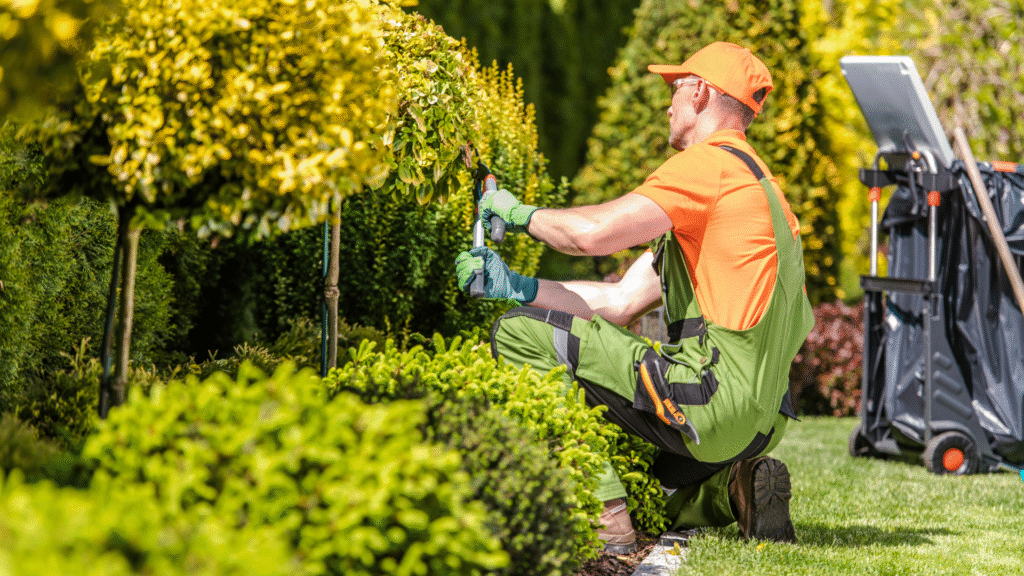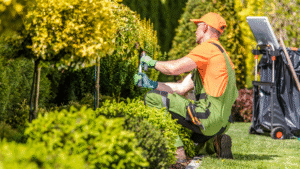The world is experiencing an awakening in terms of ecological consciousness, and landscaping is not left out of this green revolution. Sustainable landscaping, a practice that seeks to create outdoor spaces that are in harmony with the local climate and ecosystems, is becoming the new norm. It’s all about designing, constructing, and maintaining landscapes to conserve water, improve soil health, reduce waste, and decrease pollution. This article delves into the latest trends in sustainable landscaping and highlights the best practices for eco-friendly landscaping.
Embracing Green Innovation: The Latest Trends in Sustainable Landscaping
The advent of green innovation in landscaping has brought about trends that not only make your outdoor spaces aesthetically pleasing but also promote biodiversity and sustainability. One of these trends is the use of native plants. These plants have adapted to the local climate and soil conditions, making them more resistant to pests and diseases and requiring less water and care. Not only do they provide habitat for local wildlife, but they also help to conserve the biodiversity of the local area.
Another trend that is making waves in sustainable landscaping is the incorporation of edible gardens. Edible landscaping involves integrating food-producing plants within a decorative setting. It’s a creative way to add beauty to your landscape while also providing fresh, organic produce. It encourages local food production and reduces the environmental impact of transporting food. Moreover, it fosters a connection with the land and promotes healthy eating habits.
Water conservation is also a significant trend in sustainable landscaping. This involves the use of drought-tolerant plants, efficient irrigation systems, and rainwater harvesting. Drought-tolerant plants require less water to survive, helping to conserve valuable water resources. Efficient irrigation systems, such as drip irrigation or soaker hoses, deliver water directly to the plant roots, reducing water waste. Rainwater harvesting collects and stores rainwater for later use, reducing reliance on municipal water supplies.
Cultivating a Greener World: Best Practices for Eco-friendly Landscaping
Achieving a greener world starts in our backyards. There are several best practices that homeowners and landscape designers can adopt to make their landscapes more eco-friendly. The first is to reduce lawn size. Lawns require a significant amount of water, fertilizers, and pesticides to maintain. By reducing lawn size, you can conserve water, reduce chemical use, and provide more space for native plants and wildlife.
Composting is another best practice for eco-friendly landscaping. Composting turns kitchen and yard waste into nutrient-rich soil, reducing the need for synthetic fertilizers. It improves soil health, promotes plant growth, and reduces waste that would otherwise end up in landfills. Composting is a win-win for both your garden and the environment.
The use of permeable paving is also a crucial practice in sustainable landscaping. Traditional paving materials, such as concrete and asphalt, do not allow water to penetrate, leading to runoff that can carry pollutants into waterways. Permeable paving materials, on the other hand, allow water to infiltrate into the ground, reducing runoff and recharging groundwater supplies. They come in a variety of materials and designs, adding beauty to your landscape while also promoting sustainability.
Sustainable landscaping is not just a trend; it’s a necessary shift towards more responsible and mindful stewardship of our environment. The latest trends in green innovation, such as the use of native plants, edible gardens, and water conservation techniques, are transforming the way we design and maintain our outdoor spaces. Moreover, adopting best practices like reducing lawn size, composting, and using permeable paving can significantly reduce our environmental footprint. By embracing these trends and practices, we can cultivate a greener world right in our backyards.
















